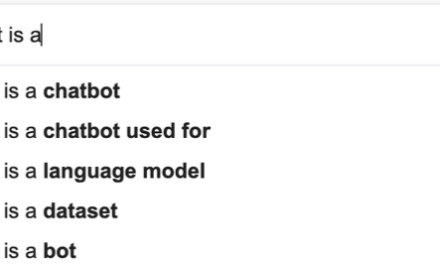Supervised by: Sanjan Das. Sanjan is a final year Engineering student at the University of Cambridge. Over his degree, he has specialised in Bioengineering and Information Engineering. He is set to begin an MS in Artificial Intelligence and Innovation at Carnegie Mellon University, U.S.A later this year.
1. Introduction to AI in EdTech
1.1 The recent importance of AI in learning
Moving into the post-COVID-19 world, educators have had to rapidly bring themselves up to speed with new technologies and instructional strategies in order to cope with the learning needs of their students. With recent challenges, we are seeing a huge increase in the need for dynamic learning strategies that equip students with life-long knowledge – and this is now a real possibility given the recent advances in AI technology.
AI in edtech can empower teachers and learners, promote change and foster the development of twenty-first-century skills. Improving education quality is a priority for most developing countries, but many governments are facing challenges in identifying efficient ways to use their scarce resources to most efficiently raise the quality of education.
The use of AI in edtech has motivated students to get more involved in learning activities, prompting them to become more active and more interested in their education overall. Moreover, some academic staff believe that adopting such technologies can enhance their communication with students, reduce the pressure caused by preparation of course materials and allow students to access lecture materials in real time.
2. Introduction to Chatbots

2.1 What are chatbots?
A chatbot is a computer program that conducts a conversation via auditory or textual methods (rapidMATION 2021). Chatbots are typically used in dialogue systems for various practical purposes, including customer service or information acquisition (Abraham 2019). Some use sophisticated natural language processing systems, but many simpler systems scan for keywords within the input, then pull the reply that has the most matching keywords, or the most similar wording pattern, from a database (Oracle India 2021).
2.2 How do chatbots work?
Text Processing and Understanding
The first step uses a text understanding module, with which the user interacts directly. The specific function of this module is to extract information and meaning from the users’ input, drawing meaning from the text, speech or even body language before an answer is generated. The module commonly uses a ’pattern matching method’ which essentially means that the module focuses on specific keywords and uses an algorithm to derive meaning from these words together. These different algorithms are linked by ’branches’ on ’decision trees’; put simply, this means that the chatbot decides what the most likely path to find an answer is based on which decision has the most previous choices or is the most common.
Dialogue Management
The input into the dialogue management module is the processed output from the text understanding module. The dialogue management module analyses and controls different aspects of the processed input before drawing links to give the user an appropriate answer.
Text Generation and Output
The text generation module provides the user with a suitable output. The text generation module can be done using one of two different methods: fixed output or generated output.
- Fixed output – The fixed output method searches the database for the most appropriate output to be presented to the user, based on the user’s input.
- Generated output – The generated output method relies on machine learning to generate the output in the original language. This is produced by the machine learning algorithm, which is both more advanced and more user-friendly – resulting in more comprehensible, less overwhelming information.

Figure 1: The flow of information in chatbots
3. Development and Evolution of Chatbots
While many would agree that the word ‘chatbot’ has only become a buzzword recently, the concept has been around since people started developing ways to interact with computers.
3.1 History of chatbots
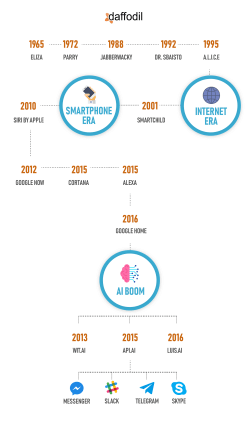
Figure 2: An overview of important milestones in the development of chatbots
- Eliza – The first-ever chatbot was introduced even before the launch of personal computers. It was developed by the MIT Artificial Intelligence Laboratory’s Joseph Weizenbaum in 1966 and it was named Eliza. Eliza examined the keywords received as input and then triggered the output according to a defined set of rules. This methodology of generating output is still used by several chatbots.
- Parry – The next chatbot was Parry, written by psychiatrist Kenneth Colby at Stanford University in an attempt to simulate a person with paranoid schizophrenia (Schizophrenia is a mental illness that affects the way some people think).
- A.L.I.C.E – Then came the A.L.I.C.E, which was developed in 1995 by Richard Wallace. While A.L.I.C.E won the Loebner prize (an annual artificial intelligence competition that awards prizes to the computer programs considered to be the most human-like) thrice, it failed to pass the Turing test. The Turing test examines whether or not a machine is able to think intelligently like humans.
- Various Virtual Assistants – After this, various virtual assistants were launched. Siri by Apple was the first one to introduce conversational assistants. The concept gained popularity and soon after Google launched their Google Assistant for Android. Following their lead, Microsoft brought Cortana into existence.
- UI – Taking this a step further, smart speakers that made vocal conversation possible between humans and the bots were introduced. Amazon Alexa (PocketLint 2021) & Google Home represent a different category of conversational UI. UI (user interface) focuses on anticipating what users might need to do and ensuring that the interface has elements that are easy to access, understand, and use in order to facilitate those actions.
3.2 Evolution of Chatbots
Chatbots in the Recent Past
Over time, advancing technology has facilitated a real improvement in the abilities of chatbots. Artificial intelligence and related technologies have been helping developers take chatbots and their functionality to the next level. Today, chatbots are performing financial transactions, processing orders, resolving customer queries, and a lot more.
The Roles and Tasks Performed
Chatbots have been a great conversational agent for businesses. For a long time, they were just an efficient replacement of a customer service provider who is there for the customers 24/7. However, with chatbots being able to take on new roles and responsibilities, they have even become an alternative to mobile apps.
From simple conversations to complex transactions, chatbots are made to do almost everything. They are now used by businesses, irrespective of the industry, to place orders, check the status of the order, book flight tickets, make financial transactions, handle complex client/customer queries, improve marketing campaigns, and much more.
3.3 Are chatbots becoming smarter?
According to RapidMATION (2021), developments are being made to enable cognitive services that give chatbots Artificial Intelligence (AI) capabilities (Jia et al, 2019). For example, a chatbot could now moderate content, make intelligent recommendations, translate text into multiple languages and much more. This text-based communication can be extended with additional interaction elements – integrating images, videos, audio messages, and file attachments are all possible. These media elements can be uploaded directly in the chatbot or referenced with the help of a link and text messages.
4. How Chatbots are Revolutionizing Education
AI-powered technology has had bountiful effects on industries and countless other applications, notably in the education sector. Education chatbots improve communication, increase productivity, and minimize ambiguity in interactions. Thus, they effortlessly lend themselves to focused, result-oriented online conversations (Farkash 2019).
4.1 Accessibility of website information
- University-orientated websites are being visited increasingly more than the people providing the information can handle
- University applicants need information that they are unable to find, such as: information on fee structures, scholarships, and course specifics
As such, universities must optimize their websites in a way that ensures their information is always easily accessible to students. Building chatbots for these websites is the ideal way forward. Educational chatbots create a friendly interface between a university website and its visitors. By answering a wide variety of questions about academic, administrative and financial matters, and sending important reminders and notifications directly through the chat window, chatbots ensure that any information present on a university’s website is available 24/7 to its students.
4.2 Simplifying the formalities of administration
Facilitating information access and retrieval is the first step in a series of tasks that education chatbots are mandated to perform. They also have a major role to play in simplifying the administrative formalities that are an essential part of enrolling at an educational institute.
Universities that create a chatbot for their websites offer existing as well as prospective students a free and easily accessible point of contact for all their questions and complaints. Students can simply type their queries into the website’s live chat window and await a response. A lot of these questions tend to be asked by new students every year, so with careful chatbot development, universities can address the bulk of these pre-admission queries through their automated chat script itself. For queries that are more complex or specific, the chatbot can register a ticket on the student’s behalf, or give them advice on who to contact for assistance.
4.3 Technical support and troubleshooting assistance
Chatbots can continue to play the role of virtual assistants for sundry online tasks. Some of the world’s best chatbots for university websites double up as virtual tech support personnel, helping students troubleshoot problems with university software, email accounts, and so on.
4.4 Advantages of chatbots
As chatbots develop and gradually improve, they bring additional convenience – and a dose of fun – into homes, cars, and other locations. When used for certain purposes, such as to manage home heating and home security, they can also save people money and free them from tedious tasks. Businesses are also finding many benefits associated with chatbots, especially in improving efficiency and providing better assistance for their employees and customers (Aivo.co. 2021).
By using chatbots, a business can:
- Save money – Digital assistants allow businesses to connect with customers and employees in a personal way without the time and expense of live representatives. By taking care of redundant tasks or shortening the time it takes to perform essential tasks, digital assistants free up staff to perform more mission-critical work.
- Provide better service – Customers and employees appreciate having natural conversations on convenient messaging apps that allow them to receive fast and accurate responses to their questions. Businesses can provide better and increased services to their employees and customers by using chatbots to handle the more routine help desk or customer service requests.
- Scale at will – By implementing a digital assistant, a business can provide human-like, personalized, proactive services to millions of people at the same time, scaling up or down at will.
- Learn/adapt as they go – Digital assistants gather real-time insights, which businesses can use to continually improve the user experience and learn more about their customers and employees.
4.5 Challenges for chatbots
Although chatbots are revolutionizing the modern world and constantly improving lives, there are inevitable challenges associated with the ever-growing complexity of and reliance upon such innovative devices (Engati 2021; Singh Gurwani 2018). These challenges range from small problems to unavoidable dilemmas, such as:
i. Lack of Emotion
Unlike humans, a chatbot has no true emotions. Empathy and understanding a person’s emotions are quite necessary for a quality conversation. Customer service executives can understand the customers’ emotions and respond accordingly, but a chatbot may not be able to do so.
Bots can be too mechanical. With pre-programmed conversations, they can handle customer requests when the flow of the conversation follows a specific path, but they may not be able to handle it when the conversation takes an unexpected turn.
Ongoing development in relevant tech could make it possible to create a personality for a chatbot (Aivo.co. 2021). They can already be trained to empathize with certain messages. Moreover, highly conversational and context-aware chatbots can also remember certain things from past conversations and utilize these insights to respond accordingly in the future.
ii. Difficult to Create
In some advanced cases, it is very challenging to create a chatbot from scratch. It can require a significant investment of time, effort and resources in order to create a chatbot that meets all of a company or individual’s requirements.
iii. Beyond First-Level Questions
One of the greatest disadvantages of chatbots is that they have usually been designed to handle first-level questions only. First-level questions are relatively simple questions with straightforward answers. These answers are pre-written and are not applicable to more complex, profound or interlinked questions. This is a crucial challenge as it limits the scalability of the service.
iv. Maintenance
Chatbots require ongoing review, maintenance, and optimization to ensure their knowledge base continues to be relevant. They need continuous updating in order to keep them delivering a valuable service.
v. Chatbot Testing
Chatbot testing is another major issue. Chatbots are continuously evolving due to upgrades in their natural language models. Thus, it becomes vital to continuously test and run a chatbot to check its accuracy and legibility.
vi. Viability of Data
Cluttering a chatbot with excessive data or even inflicting technologically advanced systems will bring no results if the chatbot does not capture the Unique Selling Proposition (USP) of the company or venture. It is not only necessary for the bot to have relevant answers to queries and the ability to perform automated functions; it must also be able to capture and effectively replicate or convey the tone, identity and mission.
vii. Data Security
Usually, web data is secure, but adding certain chatbots to it can make it less certain that the API (Application Programming Interface, a software intermediary that allows two applications to talk to each other) will be secure.
Data leaks and hacking could occur if proper security measures are not taken. Encrypting channels to reduce the chances of a data leak is necessary, especially when dealing with sensitive data, but requires additional work and upkeep.
5. Chatbots and NLP
5.1 What is Natural Language Processing?
Natural Language Processing (NLP) is based on deep learning that enables computers to acquire meaning from inputs given by users. In the context of bots, it assesses the intent of the input from the users and then creates responses based on a contextual analysis similar to that performed (often subconsciously) by a human being. When it comes to Natural Language Processing, developers can train the bot to recognise and react to multiple interactions and conversations. This gives the bot a much wider contextual basis, allowing it to assess and interpret queries more effectively (Makadia, 2019).
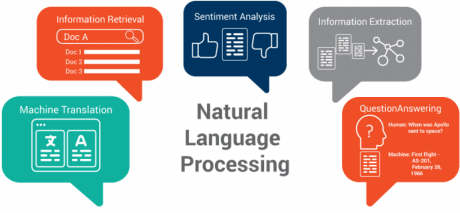
Figure 3: Natural Language Processing (NLP) functions
5.2 Best approach for NLPs
The best approach for NLP is arguably a combination of Machine Learning and Fundamental Meaning, allowing the bot to maximize positive outcomes. Machine learning alone is at the core of many NLP platforms, however, the union of fundamental meaning and machine learning helps to make efficient NLP-based chatbots. Furthermore, Machine Language is used to train the bots, allowing them to continuously learn for both natural language processing and natural language generation (NLG).
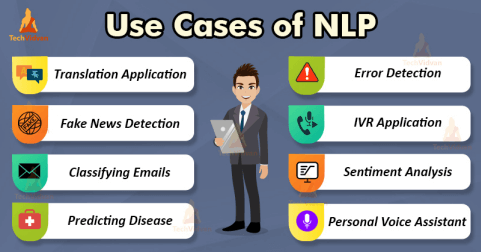
Figure 4: Uses of NLP
5.3 Why do chatbots need NLP?
There are many different types of chatbots created for various purposes. Chatbots without NLP rely majorly on pre-fed static information and are naturally less equipped to handle human languages with variations in emotion, intent, and sentiment.
Here are four reasons why chatbots should have NLP in them:
- Natural conversations across languages – The problem with the approach of pre-fed static content is that languages have an infinite number of variations in expressing a specific statement. There are uncountable ways a user can produce a statement to express an emotion. NLP will allow the bots to cope with these discrepancies.
- Focuses on critical tasks – NLP-based chatbots reduce the human efforts in operations like customer service or invoice processing dramatically, so that these operations require fewer resources with increased employee efficiency.
- Reduced cost – NLP based chatbots can significantly assist in cutting costs associated with manpower and other resources associated with repetitive tasks, as well as costs relating to customer retention, all while improving efficiency and streamlining workflow.
- Higher customer satisfaction – NLP helps chatbots to understand, analyze and prioritize questions according to the complexity; this enables bots to respond to customer queries faster than a human being.
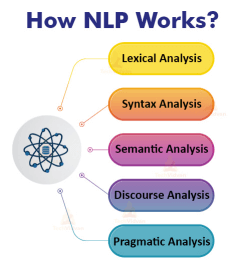
Figure 5: How does NLP work?
6. Training a Chatbot
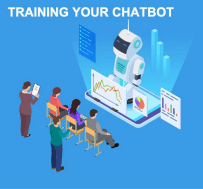
Figure 6: How do you train a chatbot?
6.1 How to train a chatbot
Adopting an AI-enabled chatbot is a bit like adopting a pet. Unless robust methods of teaching a chatbot are implemented and it is attended to properly, the errant behavior of poorly skilled AI chatbots can create a problem – just like a poorly-behaved pet.
The chatbot should first be exposed to textbooks containing definitions and word-for-word answers to specific, frequent questions. However, this alone is insufficient as it will result in a limited number of pre-programmed responses. The bot will need to learn from real interactions with users via NLP. Additionally, it will need to be trained using Supervised Learning in order to iron out any issues.
Some key phrases:
Before we explore how to train a chatbot in detail, there are some key, relevant phrases:
- An utterance is something that a user might say to the bot.
- An intent is what the user’s utterance means, or what they intend to get from the AI chatbot. For example, if someone says “show me today’s political news”, the user’s intent is to see a list of headlines. Intents are often named with a verb and a noun, e.g. ”show news”.
- An entity is a keyword making the user’s intent more clear to the bot. Using our example, if a user writes “show me today’s political news”, the entities are “today’s” and “political”. Entities are given a name, such as “dateTime” and “newsType”
Training AI is mostly about predicting what users will ask the chatbot and what it has to provide the user with in response. In the case of education, this will relate to academic questions related to a student’s subject(s). The content should cover every topic possible and might provide students with daily tests. Next, we need to train the AI chatbot to apprehend the many ways in which the user will ask (or utter) their questions. For this the developer will need to:
Define the Chatbot’s Specific Use Cases
It is essential to start the system by defining the particular problems the AI-enabled chatbot will need to solve. When chatbot training, it is common to begin with a “want list” of things the bot would ideally be able to do. Before reaching this stage, however, it is more useful to begin with an actual problem that the bot can be built to resolve.
Make Sure the Intents are Distinct
If an AI-enabled chatbot cannot understand exactly what people want, it will create a frustrating user experience. To avoid this frustration and create a positive outcome, it is vital to create very precise intents that each serve one defined cause.
Make Sure Each Intent Contains Many Utterances
The excellence of AI chatbots directly depends upon how well the sample utterances represent language used in the real world. During the improvement and testing, many unique expressions should be used to invoke every potential purpose. This will involve the use of a huge volume of iterations to ensure effective outcomes. Developers must continually replace custom values and sample utterances to make sure that all possible phrasings have been covered.
Make Sure Entities are Purposeful
Once numerous utterances have been written, it is important to notice the words or phrases that represent key variable facts. These become the entities. The purpose of entities is to extract relevant statistics, so that it is not necessary to tag every word in an utterance. Developers should avoid using one-word utterances such as a single entity like “Barcelona” – the lack of context here can confuse a chatbot.
Add Personality
Achieving the right tone of voice and personality for an AI-enabled bot is very important. It can be vital in preserving and building a brand, or in education a fun and engaging can make the difference between retaining the attention of a younger child and gathering dust amongst other failed edtech initiatives.
Interactive Elements
Focusing on engagement within the edtech sphere, a chatbot that integrates a range of interactive elements is more likely to capture the attention of students and lead to a more effective learning experience. Examples could include flashcards, animations, buttons, etc. Adding diagrammatic explanations for numerical and experimental scientific content could also boost learning outcomes.
Ongoing Training
Lastly, it’s important to remember that the job isn’t done after the chatbot has been deployed. Continuous improvement is important for a successful chatbot, as is keeping a record of system failures in order to improve and ensure similar mistakes are not made will allow a developer to ensure their bot remains at the forefront of the edtech space.
7. Chatbots and Voice Assistants
7.1 Voice/Virtual Assistants
What is a voice assistant? According to Wikipedia, a voice assistant is a software agent that can perform tasks or services for an individual based on commands or questions via text-based input or voice recognition.
7.2 Technology Behind the Voice: Deep Neural Networks (DNN)
When an input voice is given to voice assistants, the voice is converted to text, analysed to produce a reply in text and is then converted back to voice. As soon as the voice is transcribed to text using Natural Language Processing (NLP), it is analysed based on the dataset that the bot has. Depending on the questions, virtual assistant applications such as Apple’s Siri, Google Now, Microsoft Cortana, and Amazon Echo can run into problems. Web service companies are hoping to solve these challenges by using large deep neural networks (DNNs) to tackle huge, complex tasks. Some researchers have proposed a new model called DjiNN, an open infrastructure model for DNN as a service, housed in warehouse-scale computers, and Tonic Suite, a suite of 7 end-to-end applications that span image, speech, and language processing.
7.3 Hybrid Emotion Interface Model (HEIM)
Humans can very well get an idea of emotions through the tone of voice of others. An ML model called the Hybrid Emotion Interference Model (HEIM) involves Latent Dirichlet Allocation (LDA) to extract text features and a Long Short-Term Memory (LSTM) to model the acoustic features. It is used to reveal the kind of emotions behind our voice. So far, a chatbot and a digital assistant are quite similar: both provide access to information using a conversational interface.
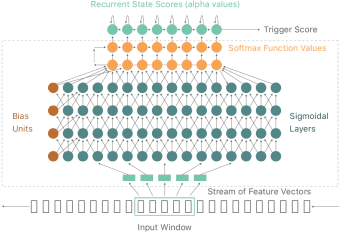
Figure 7: Deep Neural Networks (DNN)
The easiest way to conceptualise the difference between the two is that a digital assistant is focused more on the specific user and helps in various ways and use-cases (think of it as “my“ personal assistant for any task), whereas a chatbot is use-case-driven and addresses a larger group of users (think “company X’s support-chatbot for their customers”).
8. Our Proposal: Edu-Me
AI chatbots are constantly developing and becoming more relevant to and necessary for effective education by the day. However, chatbots are not developed enough yet to replace teachers. They have weaknesses and holes in their knowledge that cannot be filled without time and supervision by a human. The most chatbots can do at this moment in time is assist teachers by using AI as a way for students to ask questions and learn more outside of school, extending their knowledge in a way that teachers cannot facilitate for every student with their limited time.
Edu-Me Summary:
- Website and mobile app, students have an account in a class group by using a class code
- Students are tested on relevant information set by the teacher, after they have been taught it in class
- Students are specifically quizzed on the areas in which they show weaker knowledge as the test progresses
- Content: Chemistry, Biology, Physics, Maths, Geography, Computer Science and Languages
- Target audience: School teachers and students in secondary school
- App name: Edu-Me
Edu-Me will be a source of information and help outside of school, enabling students to ask questions and test their knowledge. Edu-Me is also able to help students identify their weaker areas, allowing them to focus on improving these rather than revising areas in which they are already competent. Edu-Me will have access to a wide range of extensive information gathered from many verified resources, which can be easily accessed by a teacher. The teacher simply selects a topic such as Biology, then proceeds to narrow it down to ‘Mitosis and Meiosis’ in the larger topic of ‘Cell Biology’. The teacher can then set the work for their class and set a due date. This external form of learning allows students to learn with a flexible time-limit, enabling students to fit the work set around their own lives.
To start the work on Edu-Me, the student will begin by logging into the app using the class code provided by the teacher. The student will then be confronted by a starter test based on the work set. This initial test will consist of various questions from different topics (in this case meiosis and mitosis). Then, once the student has completed this first test, the AI will analyse the results and offer advice in the form of short 2-3 minute videos and targeted questions based on the weakest topics shown in the test. The student can also ask the AI chatbot specific subject knowledge questions, which the AI can respond to using videos, text or working through problems.
Targeted accomplishments:
- Students can expand their knowledge outside of school without spending extra money paying for a tutor
- Sends a report to the teacher, detailing what most students were confused by or grasped very well, allowing the teacher to focus on teaching the weakest topics in class
- Students can extend their knowledge in their own time, making this a flexible learning resource
Bibliography
Abraham, K., 2019. Digital Assistants vs Chatbots: Where’s the difference?. [online] Neohelden. Available at: <https://neohelden.com/blog/conversational-interface/digital-assistants-vs-chatbots/> [Accessed 1 July 2021].
Aivo.co. 2021. Advantages and Disadvantages of Bots: Everything you need to know. [online] Available at: <https://www.aivo.co/blog/advantages-and-disadvantages-of-chatbots> [Accessed 1 July 2021].
Engati. 2021. Overcome these 6 major chatbot challenges with ease [without coding]. [online] Available at: <https://www.engati.com/blog/overcoming-chatbot-challenges-the-right-way> [Accessed 1 July 2021].
Farkash, Z., 2019. Education Chatbot: 4 Ways Chatbots Are Revolutionizing Education. [online] Chatbots Magazine. Available at: <https://chatbotsmagazine.com/education-chatbot-4-ways-chatbots-are-revolutionizing-education-33f36627964c> [Accessed 1 July 2021].
Jia, J. et al., 2019. Inferring Emotions From Large-Scale Internet Voice Data. IEEE Transactions on Multimedia, 21(7), pp.1853-1866.
Makadia, M., 2019. 5 Reasons Why Your Chatbot Needs Natural Language Processing. [online] Towards Data Science. Available at: <https://towardsdatascience.com/5-reasons-why-your-chatbot-needs-natural-language-processing-ed20fb0a3655> [Accessed 1 July 2021].
Oracle India. 2021. What Is a Digital Assistant?. [online] Available at: <https://www.oracle.com/in/chatbots/what-is-a-digital-assistant/> [Accessed 1 July 2021].
Pocket-lint. 2021. What is Alexa and what can Amazon Echo do?. [online] Available at: <https://www.pocket-lint.com/smart-home/news/amazon/138846-what-is-alexa-how-does-it-work-and-what-can-amazons-alexa-do> [Accessed 1 July 2021].
rapidMATION. 2021. Chatbots & Voice Assistants | rapidMATION. [online] Available at: <https://www.rapidmation.com/chatbots-voice-assistants/> [Accessed 1 July 2021].
Singh Gurwani, M., 2018. 4 Biggest Challenges in Chatbot Development and How to Avoid them. [online] Daffodil. Available at: <https://insights.daffodilsw.com/blog/4-biggest-challenges-in-chatbot-development-and-how-to-avoid-them> [Accessed 1 July 2021].

